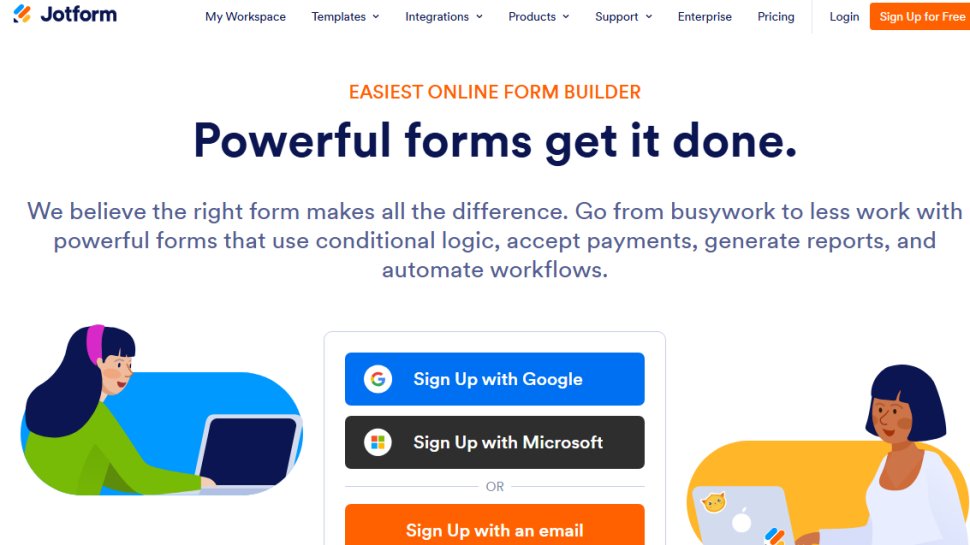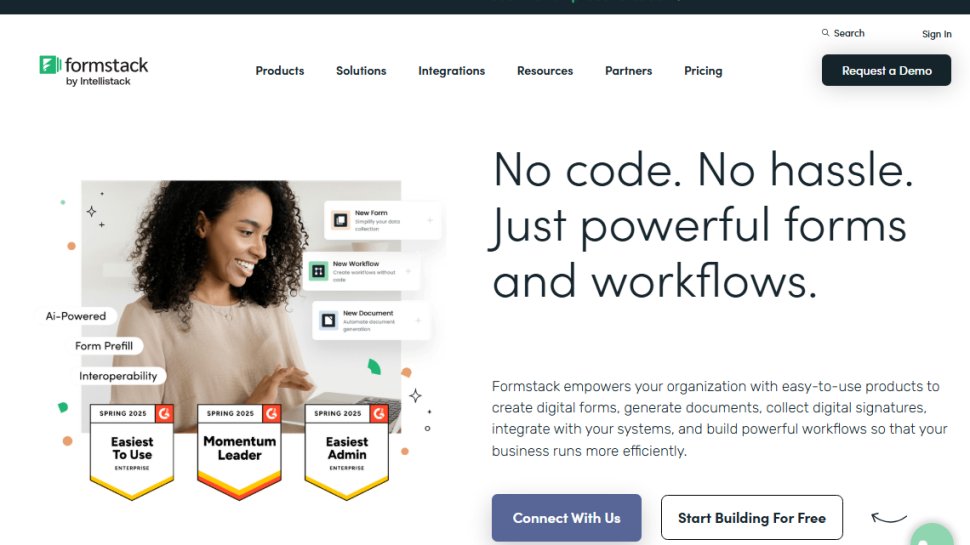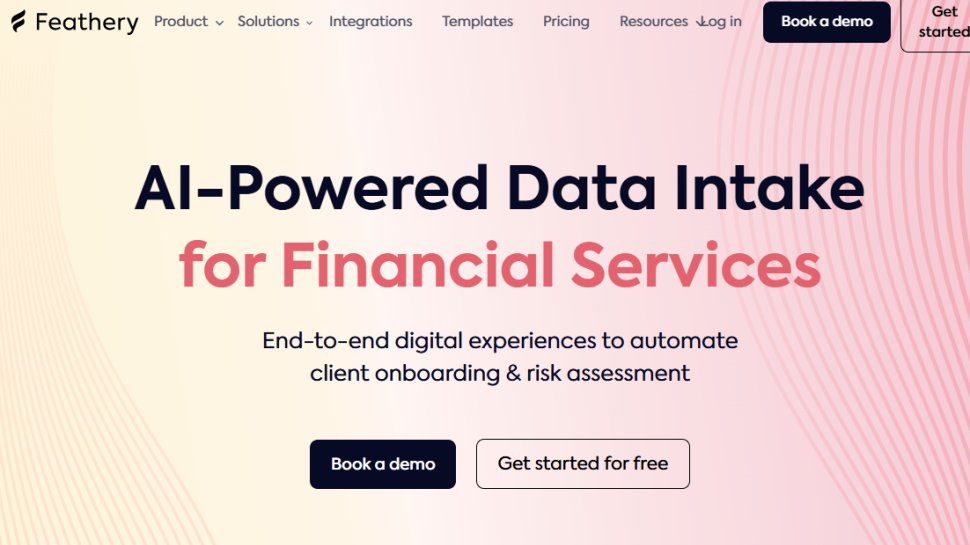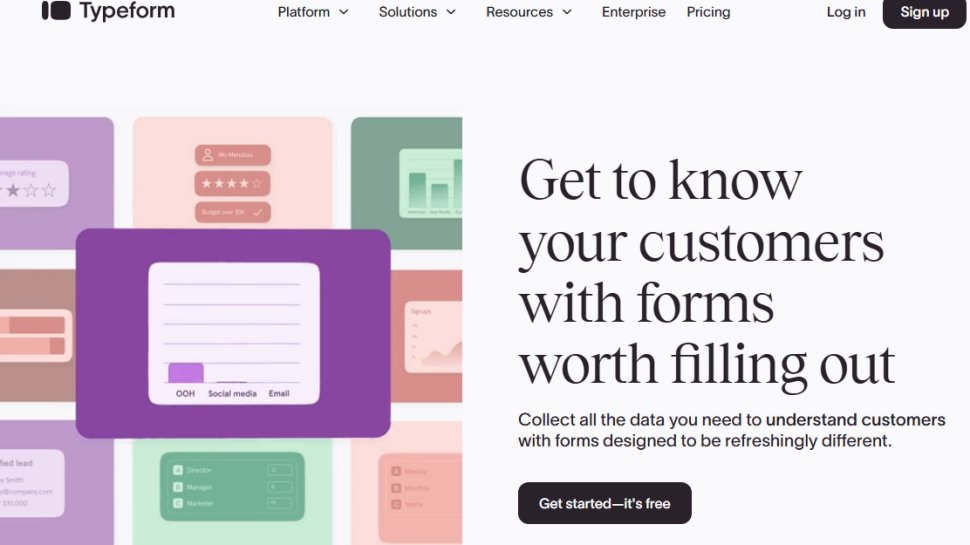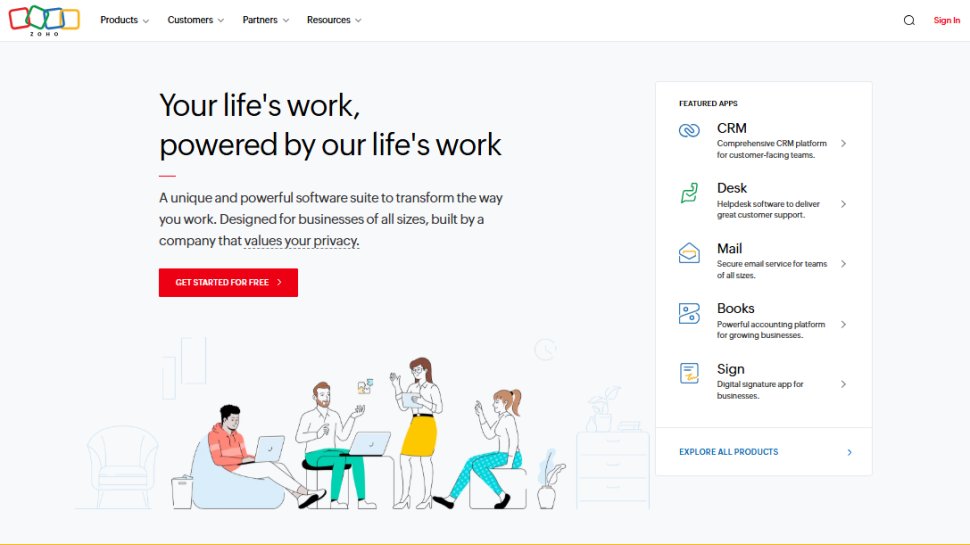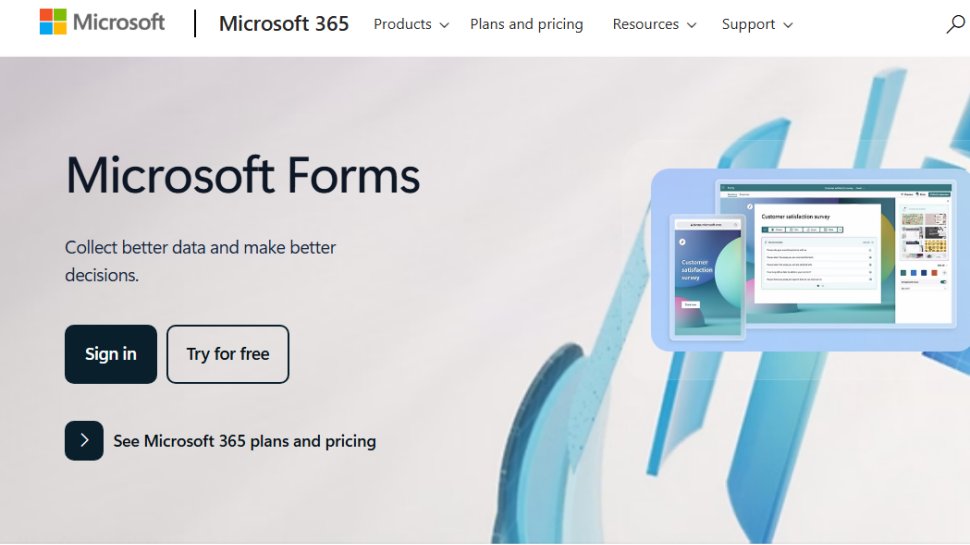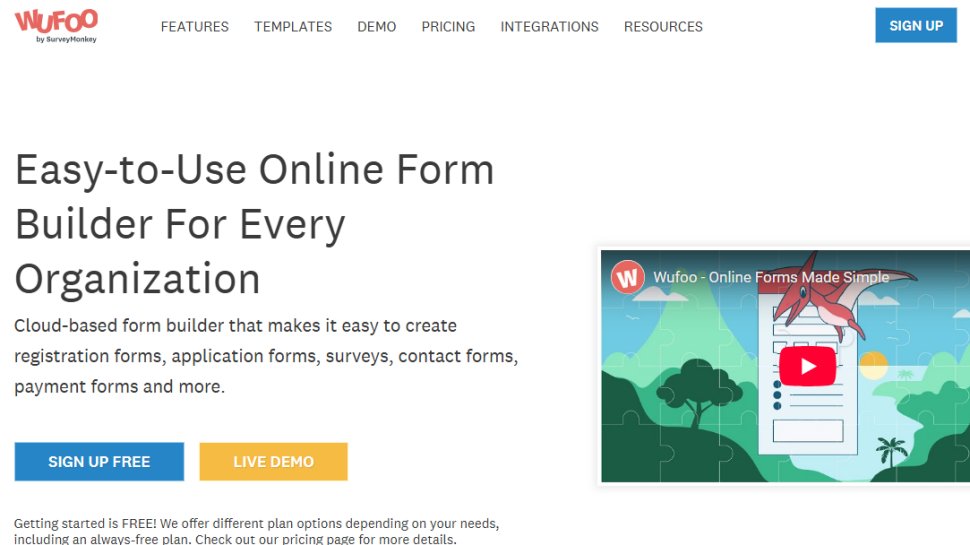Best alternative to Google Forms of 2025
Create versatile forms now

We list the best alternative to Google Forms, to make it simple and easy to produce customizable, multipurpose forms for customer and employee engagement.
Form builders have definitely evolved in the last decade. From cumbersome code-based builders to easy-to-use no-code builders — creating forms today is just a matter of clicks.
Form builders help you create engaging, information-oriented forms for various purposes — from collecting external responses to building a database to internal workflow management. Building forms has become easier with several no-code easy-to-use drag-and-drop form builders such as Google Forms.
Google Forms, a popular name in the form builder industry, is accessible for free to anyone with a Google account. It does a decent enough job for a basic form builder, with features like conditional logic, 17-odd templates, and several question types. What I love about Google Forms is its analytics and reports, displayed in an easy-to-understand graphic format. Simply integrate the form with Google Sheets to unleash a whole new domain of features,
All in all, Google Forms is a simple interface with basic form-building functions good enough for individuals, professionals, self-employed, and even small businesses. However, it’s still far behind some of the best online form builders around. There are only a handful of templates, very limited designing options, limited payment integrations, a lack of third-party integrations, and other essential features available with some paid form builders.
This comprehensive guide has listed out the best form builders for specific needs. Whether you’re a beginner looking to create forms for school or college projects or a professional looking to build data collection forms — there’s something for everyone on this list. So, without further ado, below are our picks for the best alternatives to Google Forms.
Free form builder – Create forms that fuel your entire business
With HubSpot forms, building smart, connected forms is simple. Behind the drag-and-drop editor lies powerful automation that enriches contacts, qualifies leads, and fuels sales and marketing without extra tools or integrations.
TechRadar Pro Approved Sponsored Offer
The best alternatives to Google Forms of 2025 in full:
Why you can trust TechRadar
Best alternatives to Google Forms overall
Reasons to buy
Reasons to avoid
JotForm tops our chart of the best form builders due to its sheer ability to offer a simple and easy-to-use interface along with almost every advanced function you could need. For starters, it offers more than 10,000 form templates - almost 600 times more than Google Forms, each of which is neatly categorized into 45+ categories. All you have to do is click on “use template” and edit the form in JotForm’s drag-and-drop editor. Adding elements is as easy as it gets.
What’s more - JotForms has an entire element section dedicated to payment integrations. With more than 25 payment integration options, such as PayPal, Stripe, Apple Pay, and others, you certainly won’t run out of options. JotForm’s entirely free Starter Plan is just the cherry on the cake you’ve been looking for. With up to 5 forms and 100 monthly submissions, it gives you enough room to test out the platform or even use it indefinitely if you’re a small business.
Read our full JotForm review.
Best alternative to Google Forms for branding
Reasons to buy
Reasons to avoid
There’s a lot to like about this popular form builder used by brands like NBA and Netflix. I love the sheer amount of branding freedom it offers. You can embed several brand elements from its easy drag-and-drop editor — a definite upgrade from Google Forms.
Plus, importing a pre-designed form is as easy as pasting the old form’s URL. Its PCI compliance eliminates any risks while collecting payments through its several integrations, such as PayPal and Stripe.
However, the cost is certainly a turn-off for me. At this price, I’d expect unlimited forms and responses. However, Formstack allows only 20 forms and 1000 submissions per form. Although the limits are suitable for small businesses and individuals, the price is targeted toward large enterprises. Thus, there’s a significant feature-price gap.
Read our full Formstack review.
Best alternative to Google Forms for small businesses
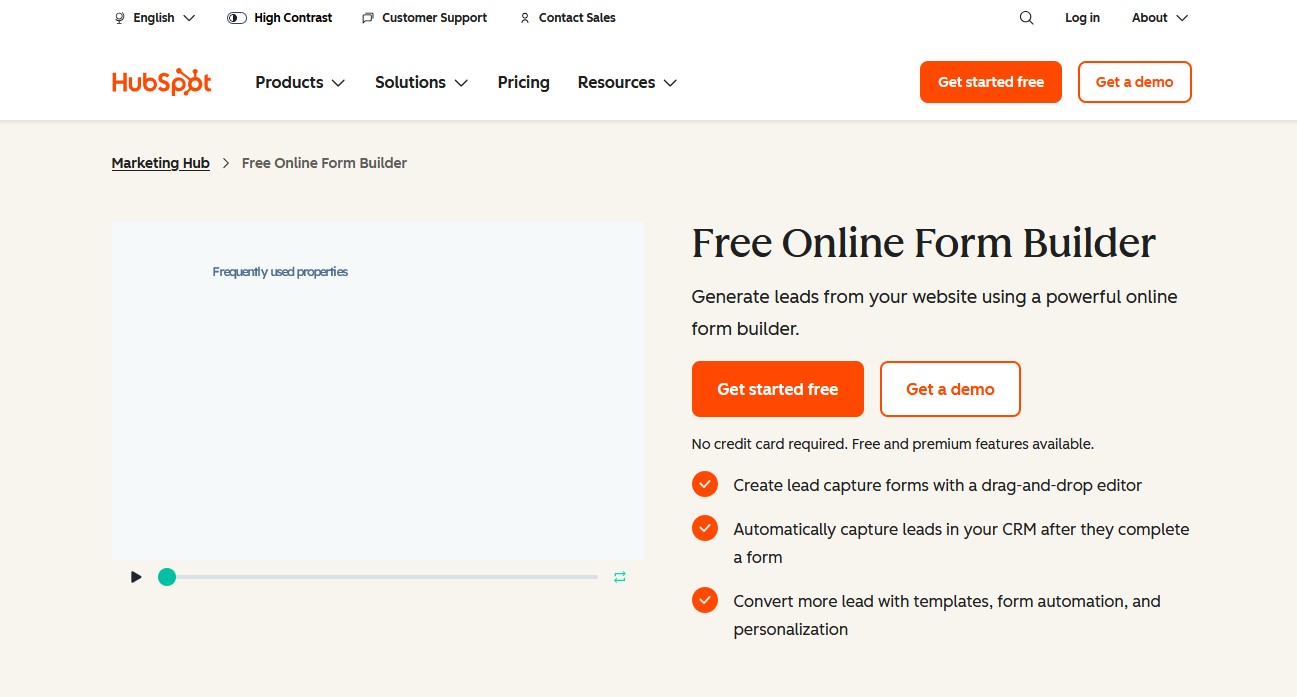
Reasons to buy
Reasons to avoid
Considering the sheer amount of products and services HubSpot has, it’s no surprise that the marketing giant has a form builder as well. In fact, it’s free and it automatically syncs leads to the CRM, making lead management far easier and more effective than with basic forms like Google Forms.
An intuitive editor allows you to create forms visually by adding various field types (text, dropdown, radio buttons, phone number, email, and so on) without any coding. You can also choose one of the pre-built form templates to get started immediately.
Additionally, there’s an option to instantly deliver a personalized email response after a form is submitted, while implementing filters to automatically block low-quality or spam entries.
The best part about HubSpot’s form builder is that it’s free. Granted, you do get fewer options and features, but if nothing else, it’s a great option to at least test it out.
If you want more, the Starter plan is priced at $9 per month per seat if you go the annual route ($15 per month per seat for monthly billing) and adds additional features while removing the HubSpot branding from forms and live chat. Also, you get up to 10 automated actions upon form submissions, compared to only one if you pick free.
Read our full HubSpot review.
Best alternative to Google Forms for SaaS
Reasons to buy
Reasons to avoid
Feathery offers a lot of features that other form builders do not. For example, its integration with Argyle and Plaid facilitates easy user information flow. I found it ideal for companies in the SaaS, healthcare, and fintech industries. This has a lot to do with its seamless payment integrations through custom-designed PCI-compliant UI, various custom form elements, dedicated Fintech integrations, and GDPR and HIPAA compliance. With Google Forms, you’d need an adequate Google Workspace or Cloud identity package to build HIPAA-compliant forms.
Feathery also provides advanced insights and analytic reports, better than what most form builders (including Google Forms) offer. What’s more - you can take the builder for a spin with a free forever plan. However, small businesses might not find Feathery a cost-effective option. That said, I’d still recommend Feathey if you’re looking for a complete form builder - you’ll not miss any features.
Read our full Feathery review.
Best alternative to Google Forms for design
Reasons to buy
Reasons to avoid
Known for its simple-to-use logic and process flows, Typeform lets you collect relevant data through aesthetic forms. You can direct your users to a specific question based on their previous answers, with draggable lines that let you create even the most complex flows with ease.
Another thing I love about Typeform is its generous free plan, with features like 500+ Zapier integrations, unlimited forms, and more features absent in Google Forms. Typeform offers more than 20 question types, including unique ones such as rankings, opinion scale, Calendly, matrix, picture choice, and more. With over 71 integrations, including popular tools such as Excel, Google Analytics, Slack, and Salesforce, managing workflows and teams is also easy with this form builder.
Read our full Typeform review.
Best alternative to Google Forms for payments
Reasons to buy
Reasons to avoid
Paperform is an ideal all-in-one form builder, with over 650 customizable templates, 27+ question types, and 1300+ payment integrations. These strong core aspects, coupled with various customization options and conditional logic, make Peperform a better form builder than Google Forms.
Paperform’s payment integrations are better than most peers. You can accept donations in various currencies — perfect if you’re looking to accept cross-border donations.
However, I found the pricing on the higher end and doesn’t allow you to incorporate custom branding. However, one thing I love about the builder is the ability to create unlimited forms with every plan.
Read our full Paperform review.
Best free alternative to Google Forms
Reasons to buy
Reasons to avoid
I love Zoho Forms for its feature-laden free plan. Payment integration, a feature often available with paid plans of other builders, is available for free with Zoho, besides custom notifications, 20+ field types, and integrations. Even upgrading to its basic plan is pocket-friendly. Although Google Forms is also free, it doesn’t have so many features.
Customizing and sharing forms on various platforms is also easy with Zoho Forms - you can even use QR codes to share forms. Although the builder integrates seamlessly with the Zoho suite of apps, the platform’s third-party integration options are somewhat limited. That said, the builder’s intuitive iOS and Android app makes tracking forms on the go an easy task. All in all, Zoho Forms is an ideal budget-friendly, feature-packed form builder.
Read our full Zoho Forms review.
Build unlimited alternative to Google Forms
Reasons to buy
Reasons to avoid
Data collection, easy analysis, and workflow automation are Cognito Form’s strongest suit. Collating the data collected for further analysis, exporting, or importing needs is made easy through customizable Excel templates. The builder offers more than 17 field types in an easy-to-use and intuitive drag-and-drop editor, which makes building forms a breeze.
One thing I love about Cognito Forms is its integration with various website builders such as WordPress and Weebly. This allows you to embed your form directly into your website — a huge plus if you’re looking to generate sales leads or looking for service feedback.
Cognito Forms also offers a handy free plan with unlimited forms — an ideal proposition if you want to take the builder for a spin.
Read our full Cognito Forms review.
Best alternative to Google Forms for surveys
Reasons to buy
Reasons to avoid
Microsoft Forms is well-known for its survey capabilities. Fields like rating, net promoter score, ranking, and the Likert scale are ideal for building information-driven surveys. Just like Google Forms, Microsoft Forms is also free for anyone with a Microsoft account. A decent library of 27 templates, along with an easy-to-use builder, gives it a slight edge over Google.
Although users can benefit from seamless integration with the Microsoft suite of apps, third-party integrations are still a challenge with Microsoft Forms. Only 8 field types can also make things difficult if you’re looking to build advanced forms. If you already have a Microsoft plan, Microsoft Forms might get some limited work done. However, purchasing a whole Microsoft Suite just to use its Forms isn’t worth it.
Read our full Microsoft Forms review.
Best alternative to Google Forms for data
Reasons to buy
Reasons to avoid
If you’re looking to build a form to collect data through surveys, Wufoo is a no-brainer pick. It offers more than 150+ survey-oriented templates which are easy to customize as per your needs. Wufoo’s robust CRM integrations help build custom workflows — something small businesses would love but wouldn’t get with Google Forms.
Real-time notifications, payment integrations, and conditional logic are some other benefits you can expect from Wufoo. However, its builder interface seems to be stuck in the 90s. When compared to peers like Typeform and JotForm, the Wufoo interface seems dull and lacks inspiration. It also lacks CPATCH verification, which increases the risk of bot entries and submissions.
Read our full Wufoo review.
Alternatives to Google Forms FAQs
How to choose a form builder
Choosing a form builder depends on several factors, such as the purpose of forms, pricing, and integration needs.
Pricing — if pricing is your sole concern, you can opt for free form builders such as JotForms, Zoho Forms, and Feathery.
Purpose — Are you a business looking to generate leads through forms or a student looking to conduct surveys for your project? Each form builder serves a particular purpose. For example, you can opt for Wufoo if you want to create survey-oriented forms. Businesses looking to create robust internal workflows should look for forms with CRM integrations, such as Typeform or Cognito Forms. If you’re in SaaS, healthcare, and fintech industries, Feathery is an ideal pick.
Ease of use — If you’re a beginner or lack coding knowledge, look for drag-and-drop form builders without coding requirements. Zoho Forms, Google Forms, and Microsoft Forms are among the easy-to-use builders.
How we tested the best alternatives to Google Forms
Picking 9 form builders from a buffet of hundreds isn’t easy. Here’s how I tested the form builders to come up with the above list.
Essential features — All form builders must offer some common features, such as integrations, templates, several question types, and customer support. A compromise on these essentials would make it difficult to build purposeful forms.
User Interface and templates — Apart from features, the number of pre-designed templates and the builder user interface are important things I considered. All the recommended form builders offer a decent number of templates that are easy to customize with intuitive form editors — some being drag-and-drop and some click-oriented.
Reporting capabilities — Collecting data through forms isn't enough. The data must be able to be produced into charts and Excel sheets to be analyzed to make effective decisions. All of my top form builders offer excellent reports and analytics. From Google Forms’ simple charts to Feathery’s advanced insights — you can do a lot with your collected data.
Get in touch
- Want to find out about commercial or marketing opportunities? Click here
- Out of date info, errors, complaints or broken links? Give us a nudge
- Got a suggestion for a product or service provider? Message us directly
- You've reached the end of the page. Jump back up to the top ^
Sign up to the TechRadar Pro newsletter to get all the top news, opinion, features and guidance your business needs to succeed!

Désiré has been musing and writing about technology during a career spanning four decades. He dabbled in website builders and web hosting when DHTML and frames were in vogue and started narrating about the impact of technology on society just before the start of the Y2K hysteria at the turn of the last millennium.

